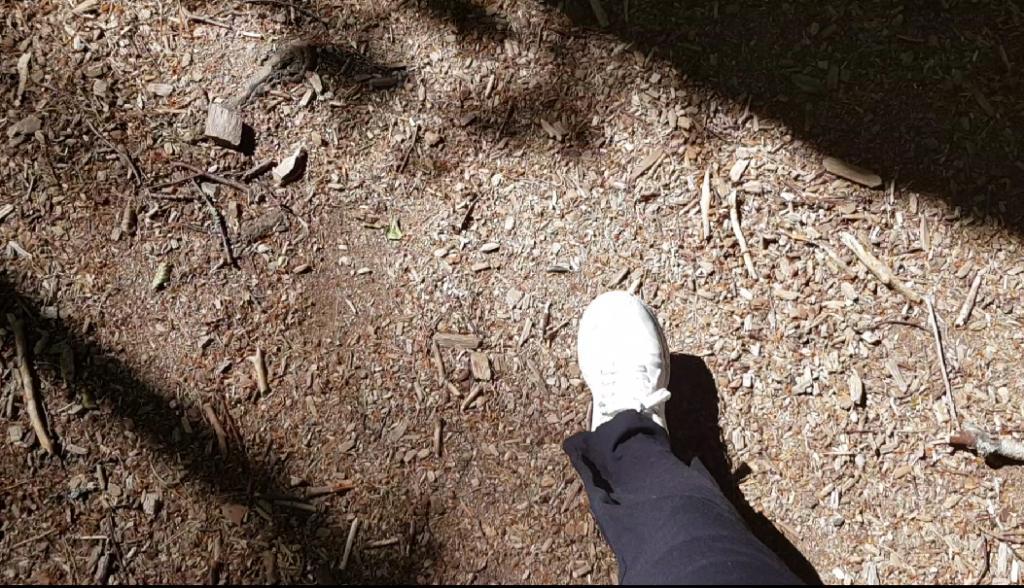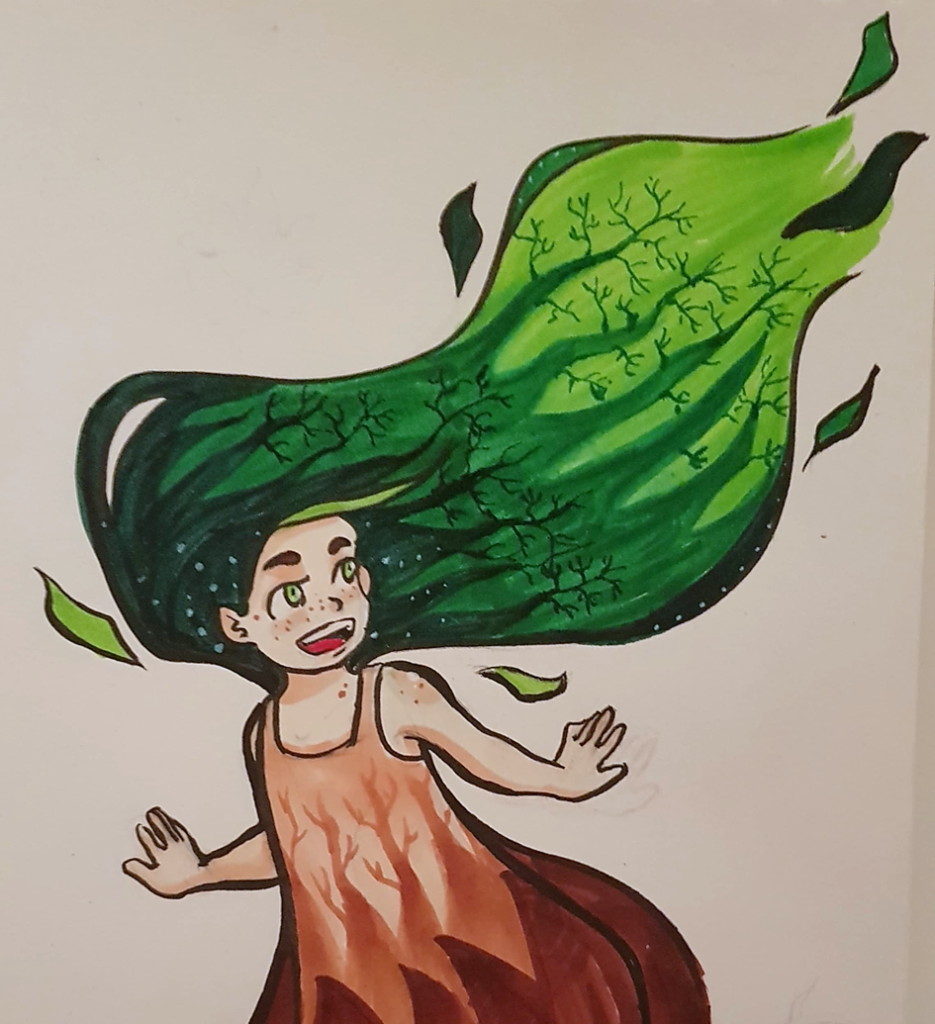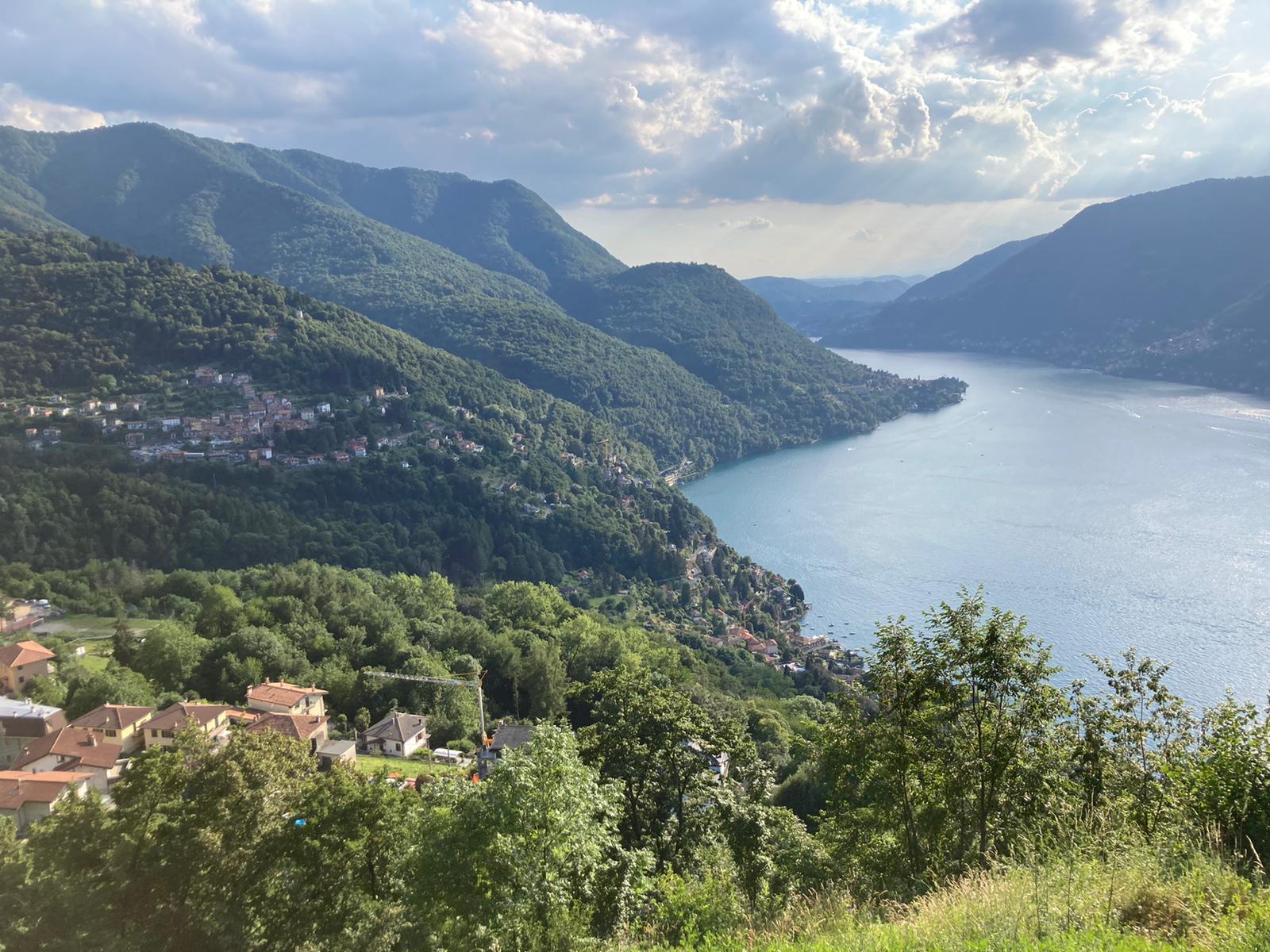First, I made this walking proposition:
Go outside to a place you find being a peaceful environment. Look up to the sky. Try connecting with it by giving it a name and pronoun. Imagine that instead of having a body, you are your body. As you breathe in the air, imagine you breathe in the sky you’re looking at, and you slowly also become the sky.
The thought was to highlight how the sky and air that we breath is also a part of nature, not only all the greens and living organisms. I carried it out and documented it through filming and video editing.

I got this walking proposition back:
Take a walk in the same place (preferably a place you feel surrounded by the green) on two different days or times of the day. Try to register your emotions in that moment: don’t judge them, just realize them and what your senses say about the way you feel about that place. Approach it as if you were seeing it for the first time. And try to recreate these feelings through whatever artistic form is close to you.
I found this very exciting, and I do have a forest nearby. I did not have the time to do this two times, though, so I had to shorten the task down to one walk. Otherwise, I did as the task proposed.
As a child I used to play a lot in forests, running around, exploring, pretending to do horseback riding, jumping over self-made obstacles. Therefore, when I entered this forest with a clear made path at daytime, I couldn’t help but feel that childish sensation lurking back in to me. I wanted to climb trees, run and have fun. I think in one way, I always felt this way in forests, but it’s been interpreted as a sense of harmony. Admitting the childish aspect of the feeling, I got a true sense of what I really did experience amongst the greens.
To best represent this feeling, I tried to recreate it through sketching that childish-playful sensation, in one with the forest.



A task like this can be very useful in a classroom. I study to become a teacher with children from 1st to 7th grade. This is a time where children already do a lot of play-work and have the ability to immerse themselves completely with the world they’re making. Drawing this into the nature would be an artistic way to create relations with the other world outside the urbanized one, allowing children to play with all their senses, maybe also through artistic tasks like making a dreamcatcher from all nature-based materials that they find themselves. Doing this, children will understand the value and preservation of forests and species to a much more considerable degree than being thought from books.
Leslie’s proposition for Anna
Go outside to a place you find being a peaceful environment. Look up to the sky. Try connecting with it by giving it a name and pronoun. Imagine that instead of having a body, you are your body. As you breathe in the air, imagine you breathe in the sky you’re looking at, and you slowly also become the sky.
When Leslie proposed this walk to me, I was travelling in northern Italy for work reasons, in a place I had never been before. So it was a real discovery and I decided to use the proposal to approach the place.
I introduced myself to the environment.
I was observing the changing sky, with whom I could relate, as in this period of my life I’m changing a lot of places and meeting a lot of new people.
This identification with natural elements made me feel like I am introducing myself to a stranger and little by little, by coming back and approach the same place, I get used to and get familiar.
Nice to meet you sky, nice to meet you hills, nice to meet you lake.
At the same time, the power of breath makes me feel peaceful and very relaxed, also as I wanted to inspire the life around me and make it mine, know it better – through the smell that enter in my nose.
I feel my body more anchored to the present moment and to the environment around– as I’m used to feel in my yoga session. There’s a real exchange through the senses from the world outside to our inside.
Not only it was a sensorial exploration, but I can say a posture, a way to be in the world, a real exchange, an encounter took place.
For me, this kind of posture is not about personifying places, the environment, but about putting it back at the centre of a relational exchange, no longer ignoring it, but widening our relational spectrum, through connections that are broader, more complex and embrace more than just human beings.

Dear Leslie and Anna,
Thank you for these nice propositions and reflections! I really like the embodied nature of both, such as the sentence “Imagine that instead of having a body, you are your body”. Also, the perspectives on connecting to what and who surrounds us not as something we observe, but that we interact with it / them (and they interacts with us). There are many who take up these perspectives these days, to challenge the human-centered (athropocentric) perspectives on nature (i.e. to observe ‘the view’ or ‘the landscape’, which means the human eye and perspective defines the surrounding world). Helene and I have written a bit on this, too, we may share when the publication is out soon.
One thing that I am curious about, because I find myself tending to do the same, is how we often search or long for very peaceful and natural surroundings for these kind of walking propositions. What would it entail if we did the same (or something else) in the middle of a busy city? Would the reflections or experiences be very different, or more or less the same?
I also enjoy how you relate the pedagogy of ‘propositions’ to you teacher education, Leslie, and am curious about how you think these more open-ended ideas (‘proposition’ rather than ‘task’) may work with children. We may tend to think that critical pedagogy, which focuses on shifting the initiative and awareness of exploration to the student’s own attention (i.e. exploring and reflecting rather than carrying out a task just because the teacher says so), is something that works with adults. How would it work with children?
We will take some time to reflect on these issues/experiences one of the first days in Lesvos, hope to learn more about your experiences! Best, Tormod